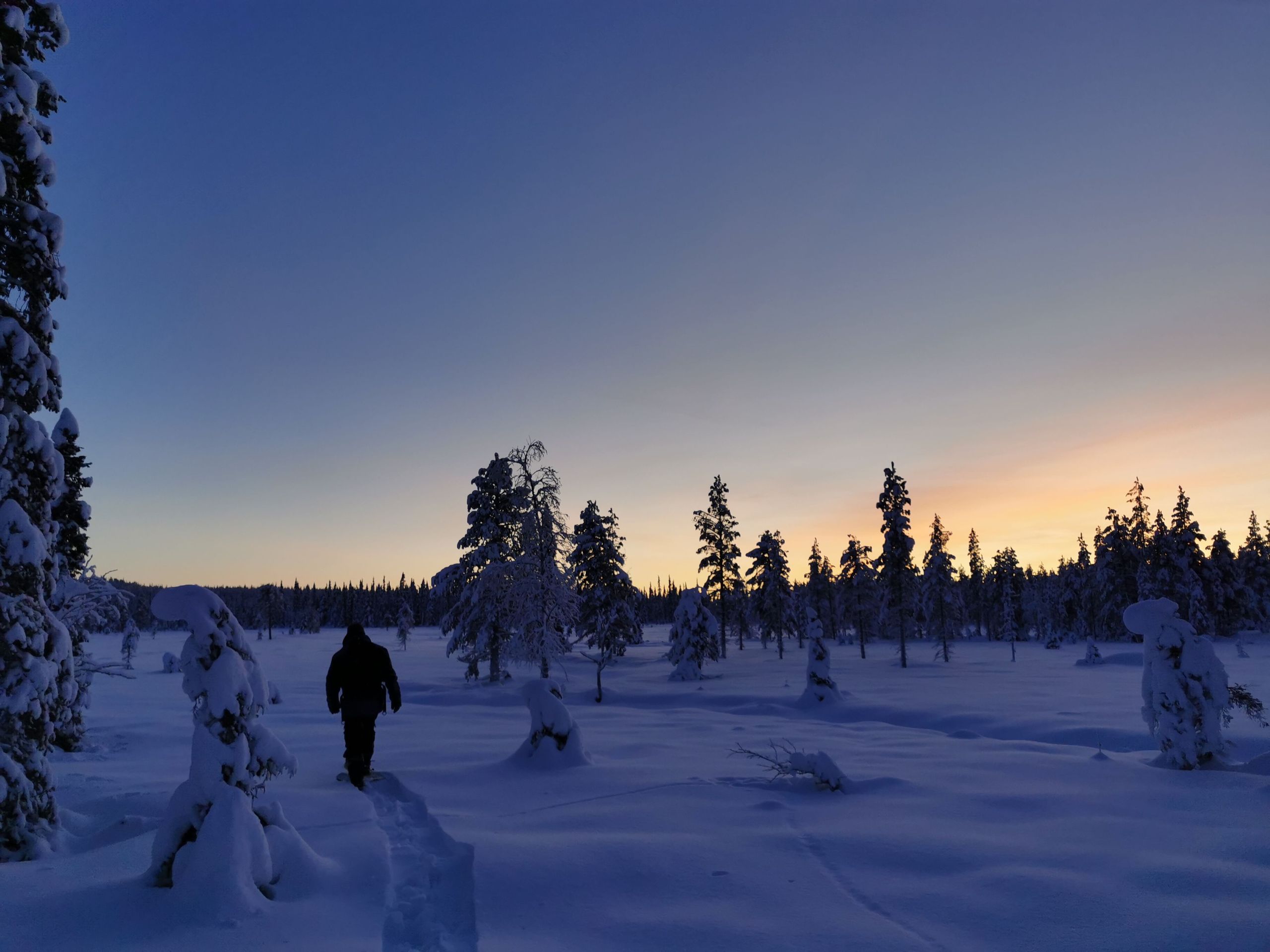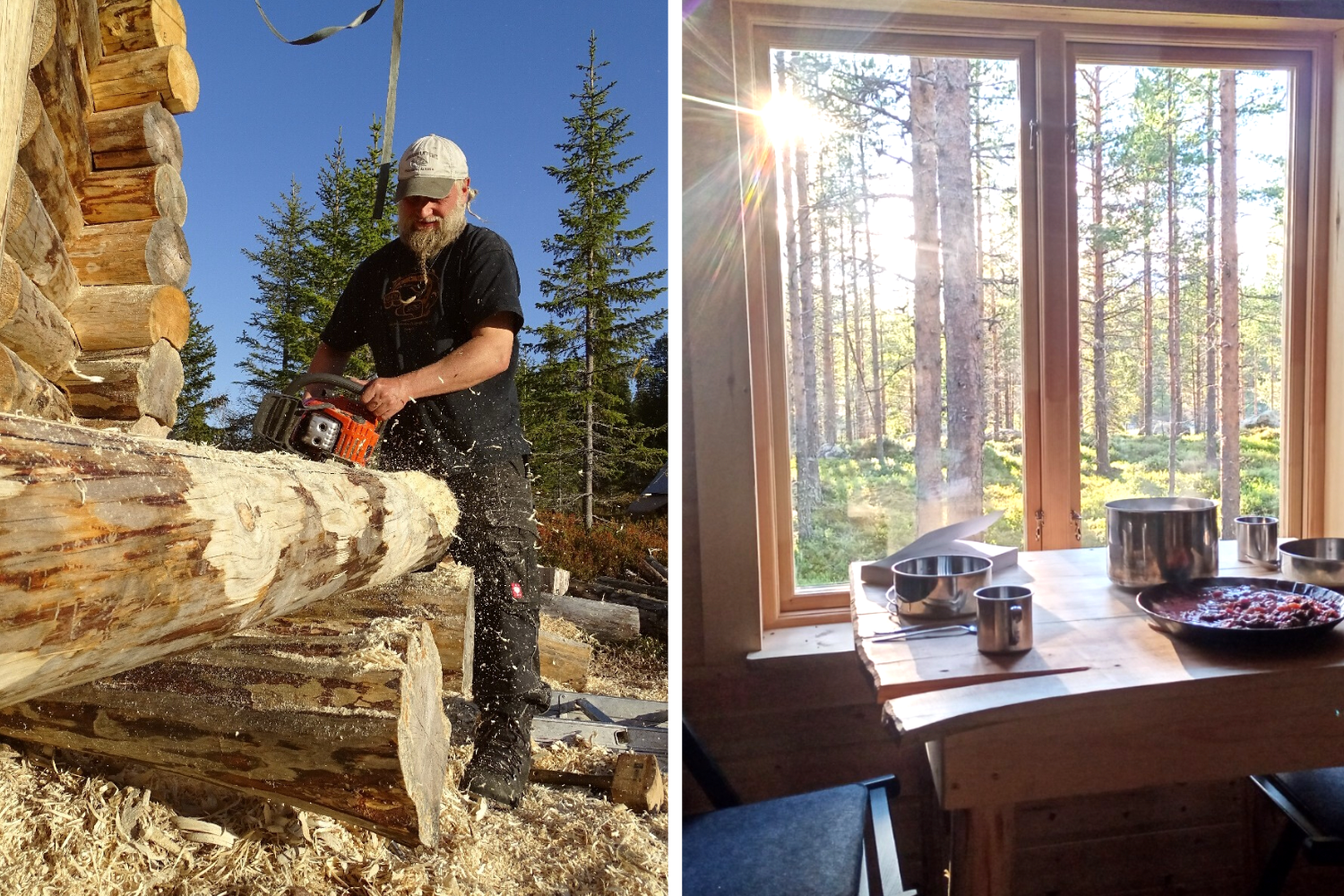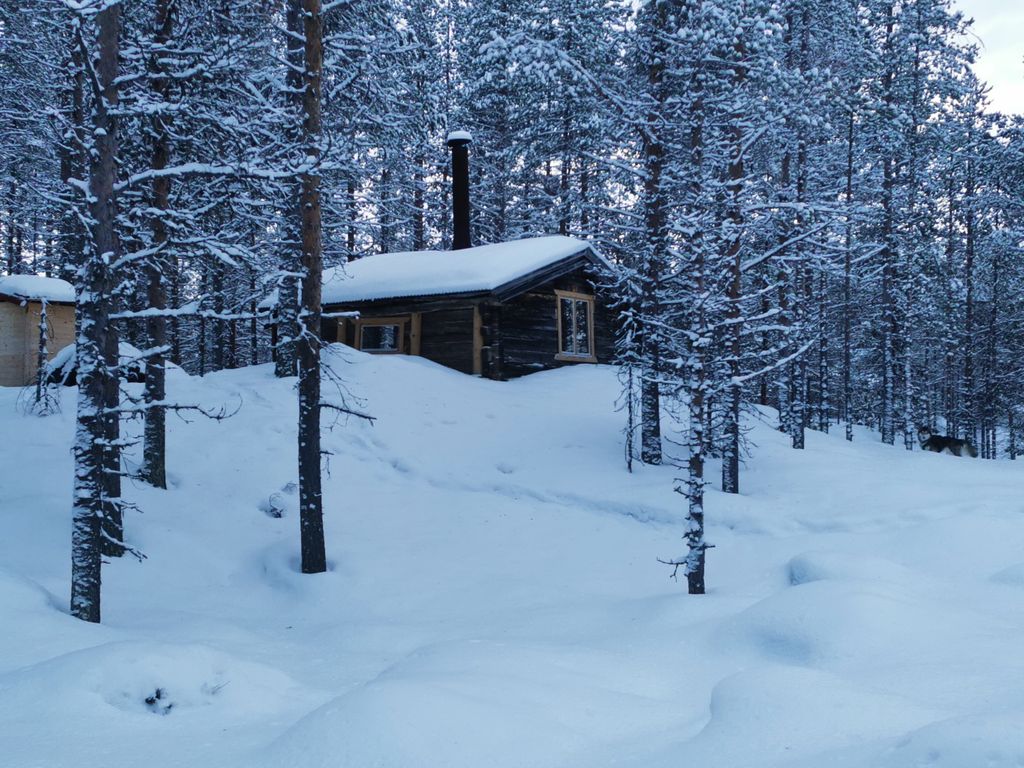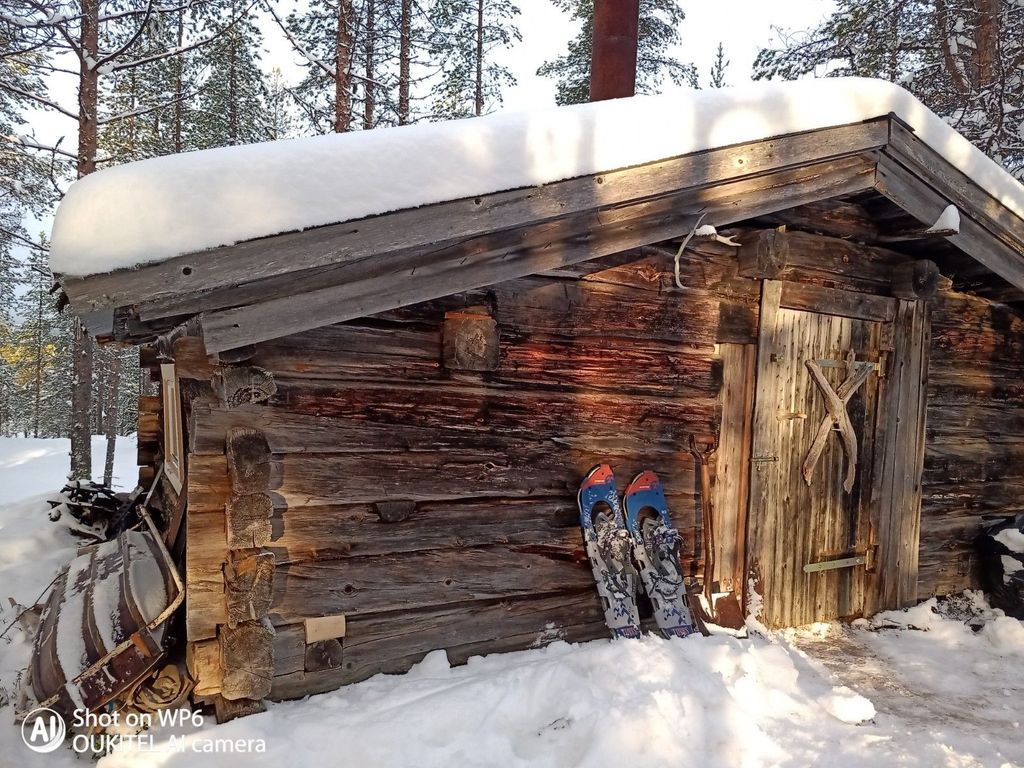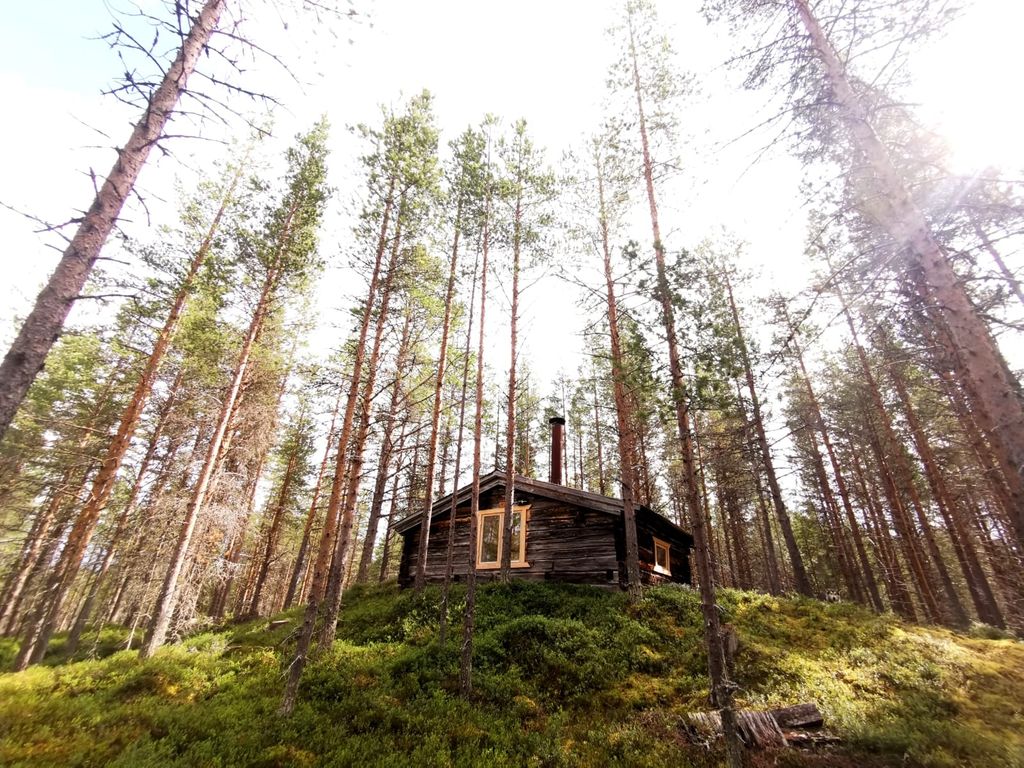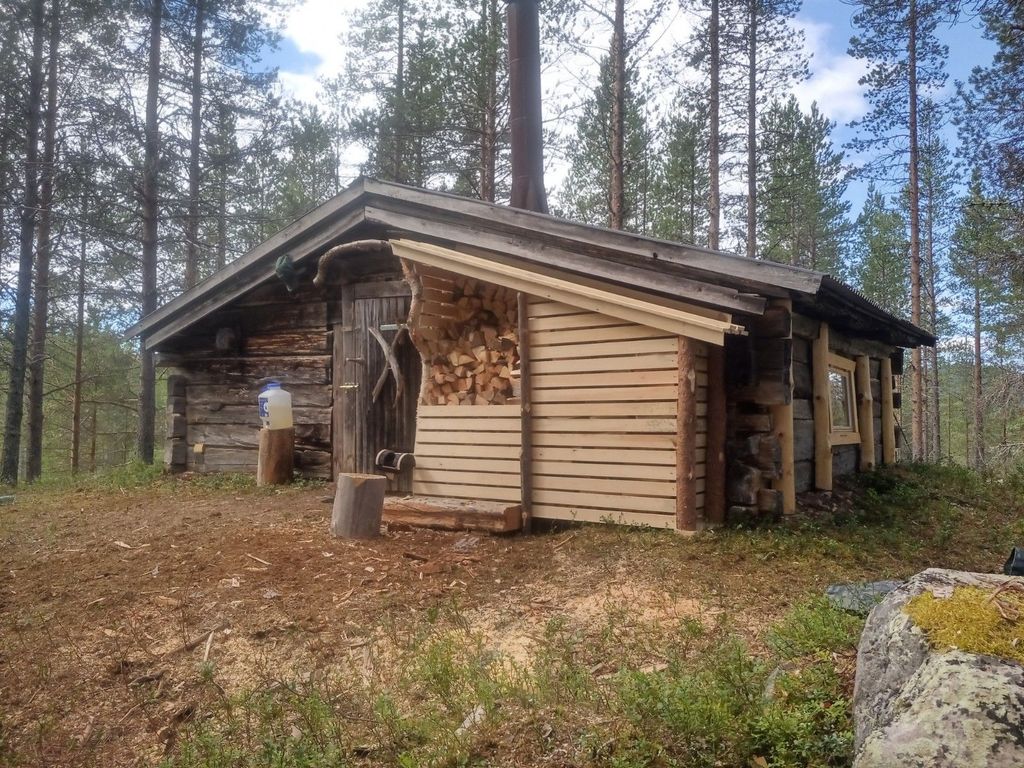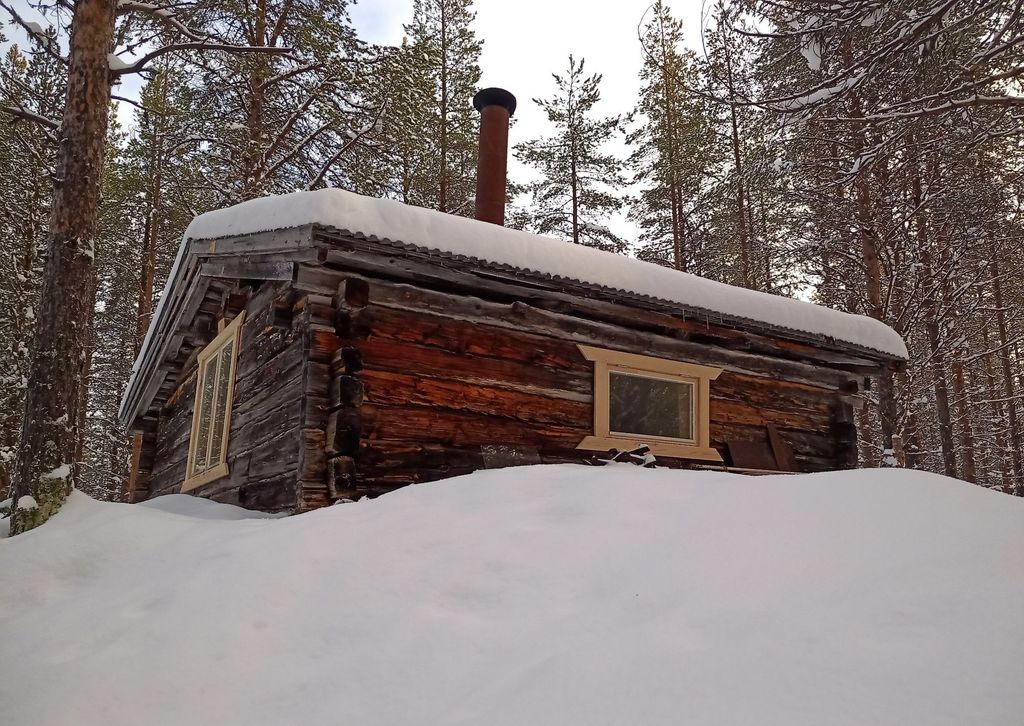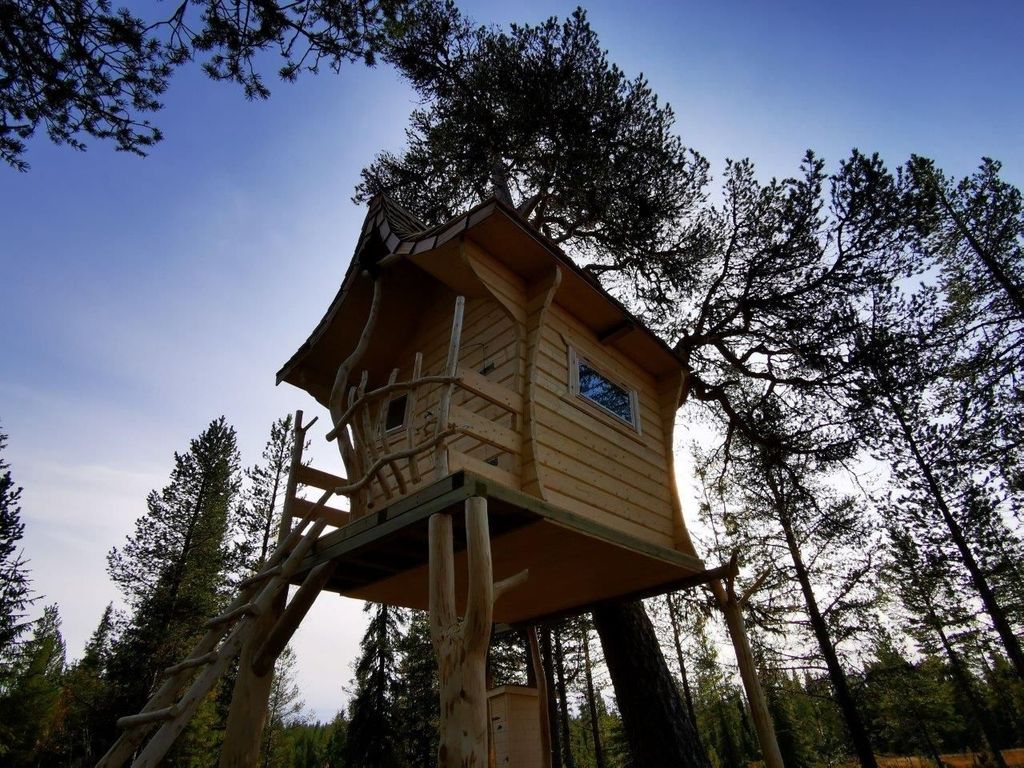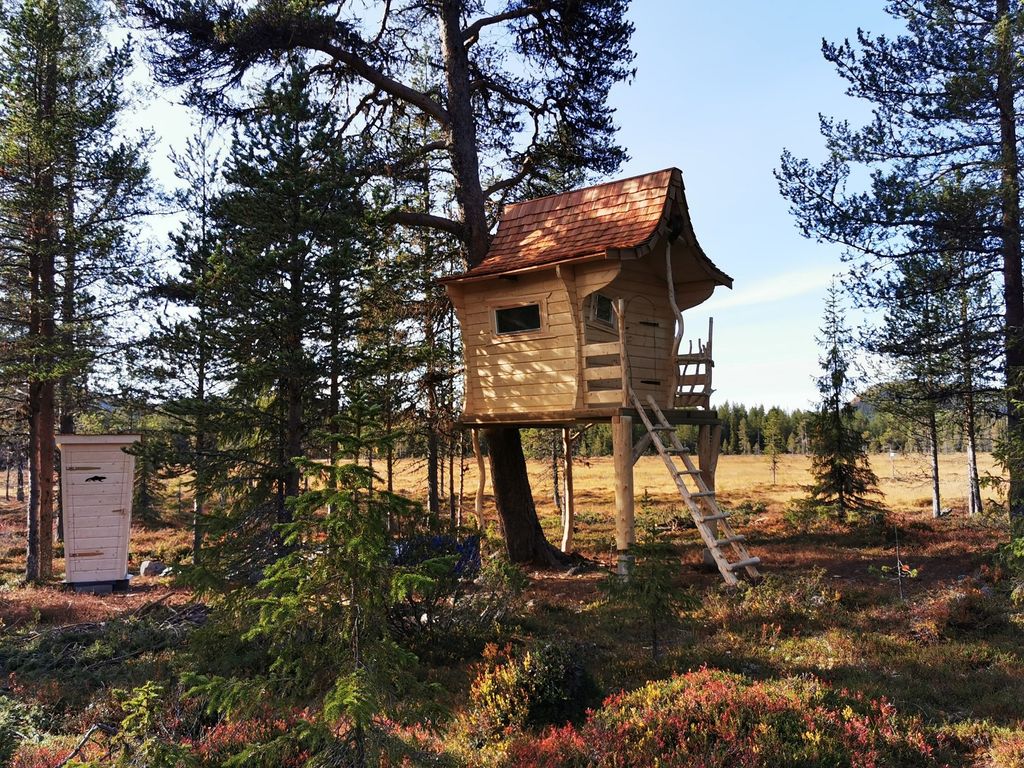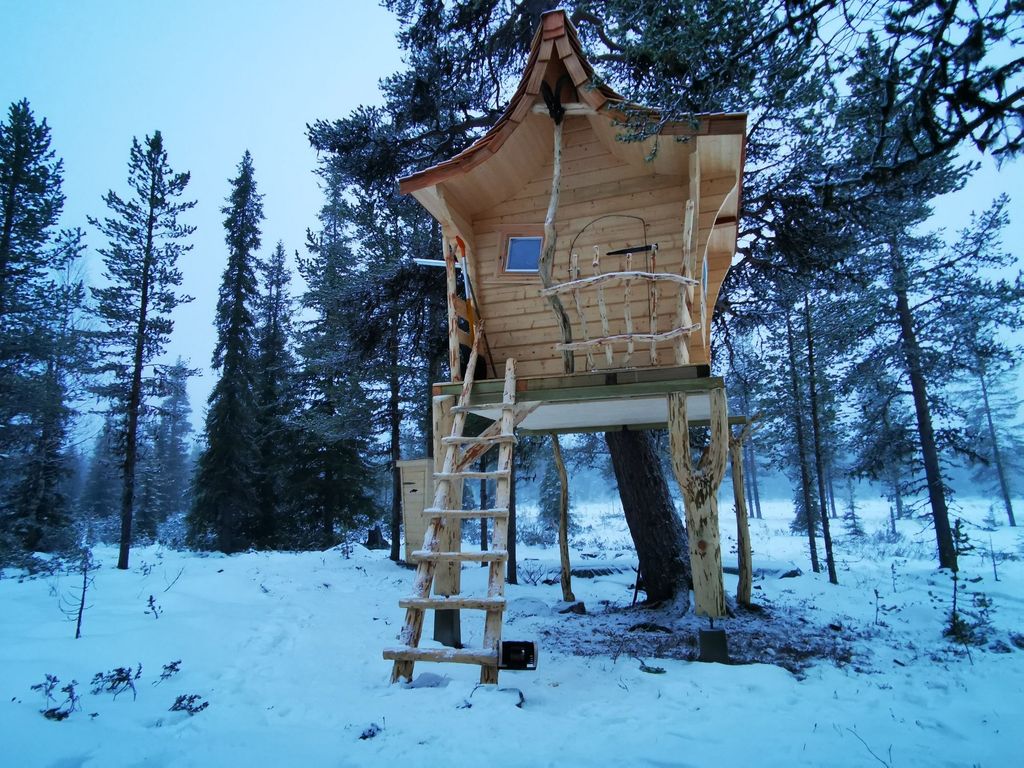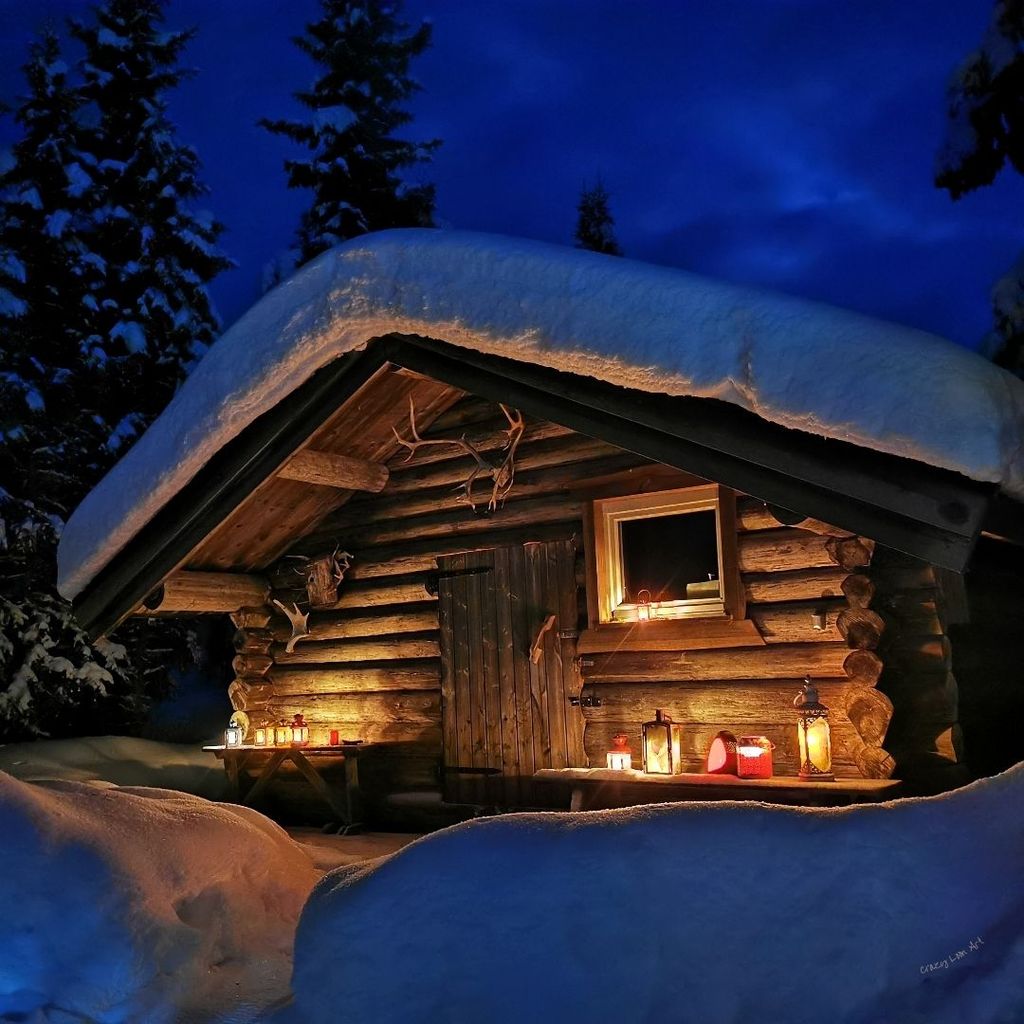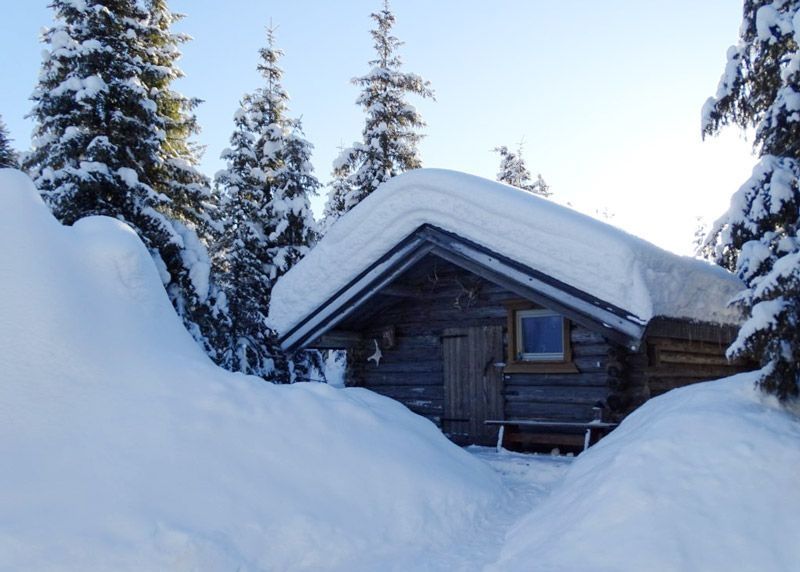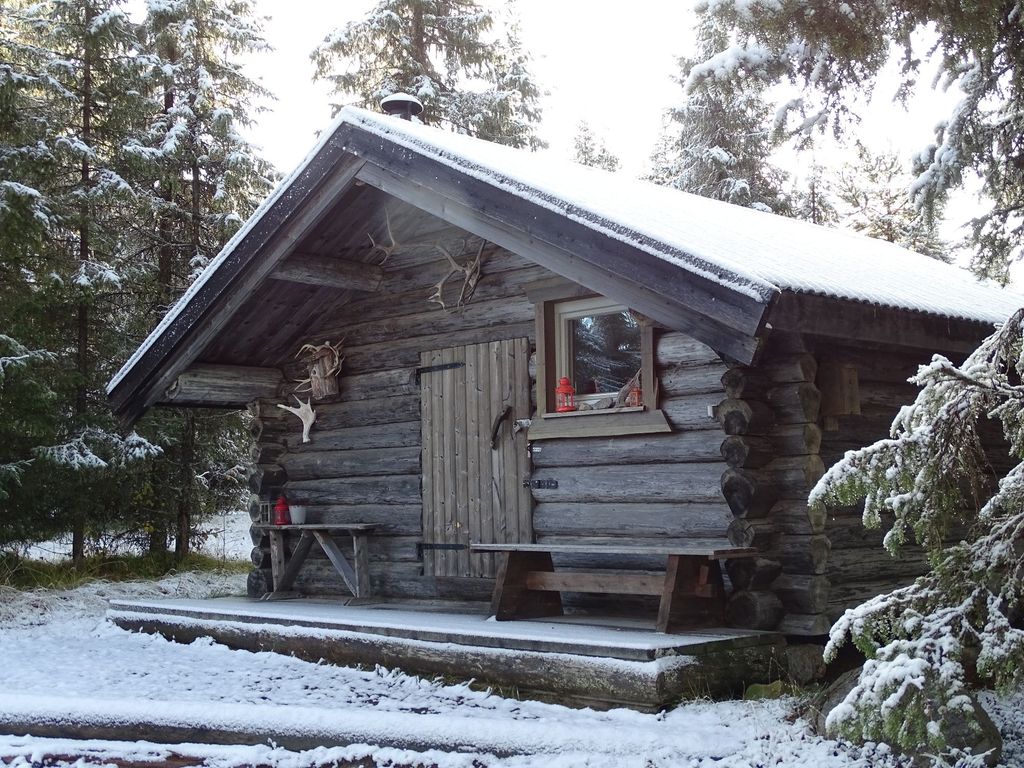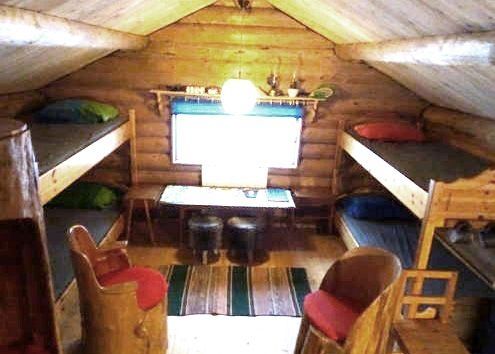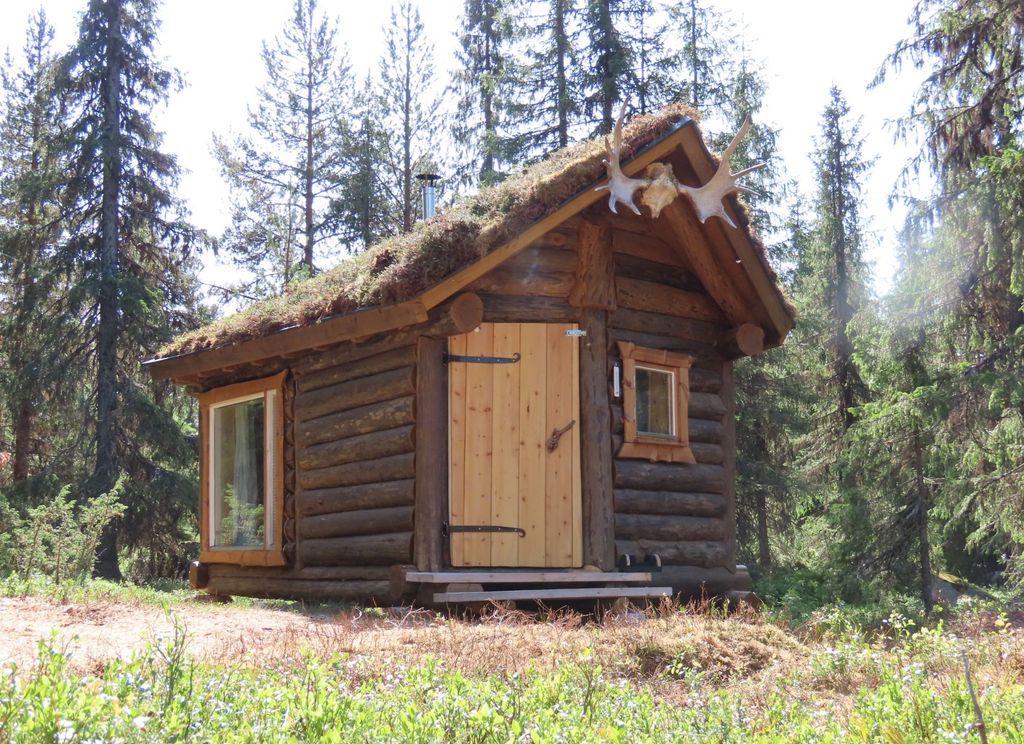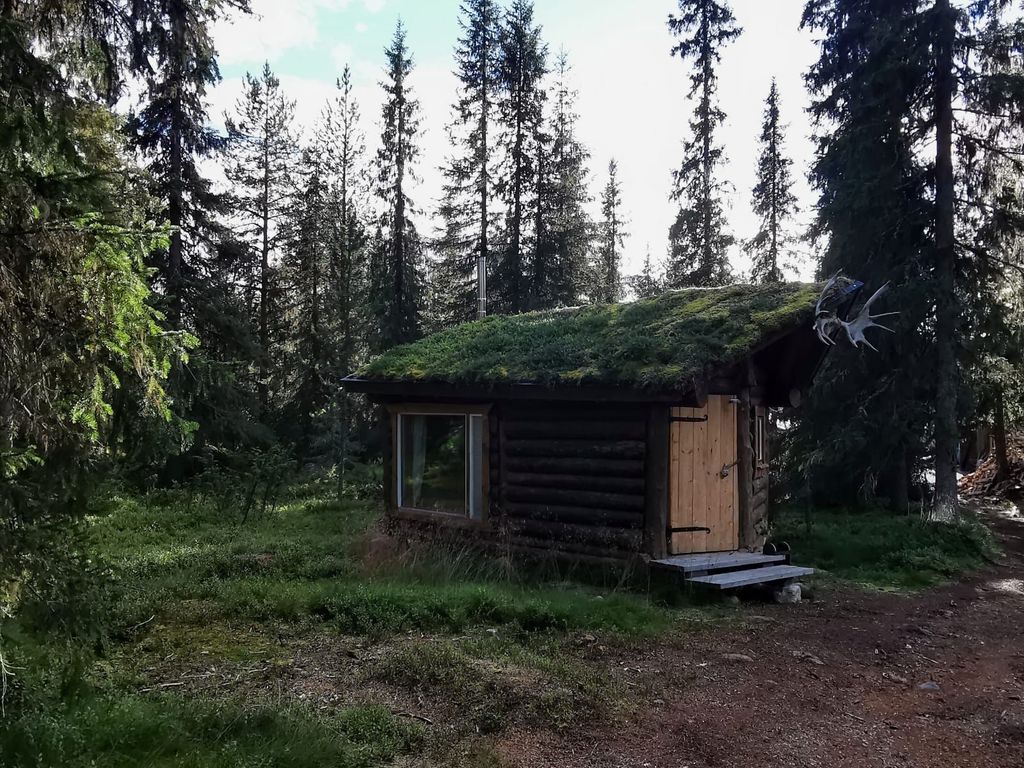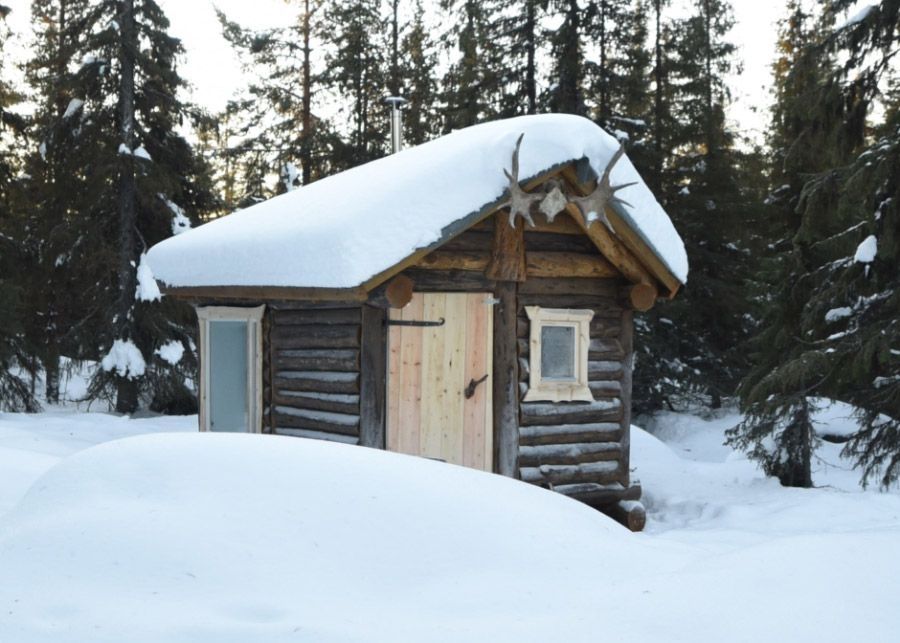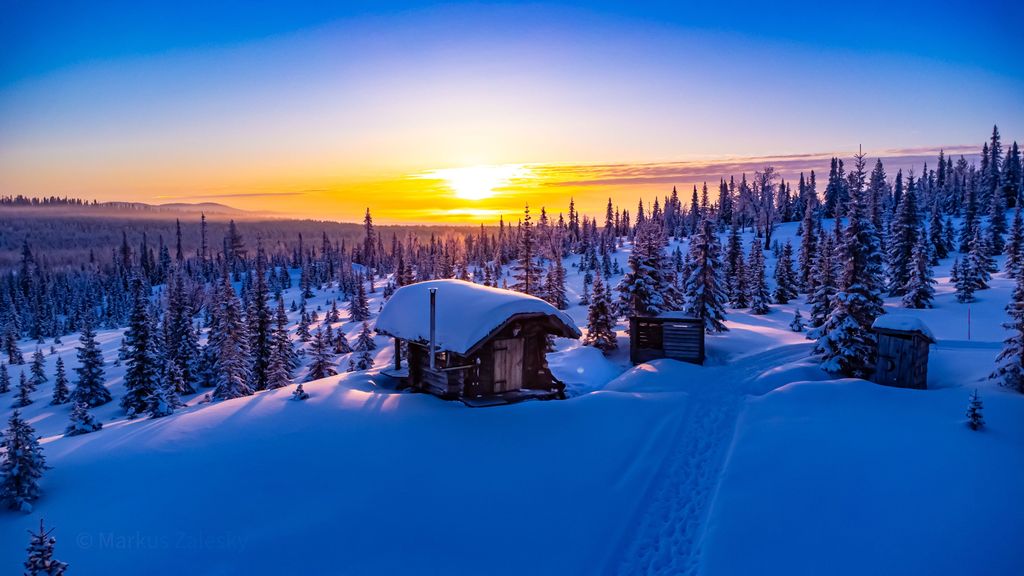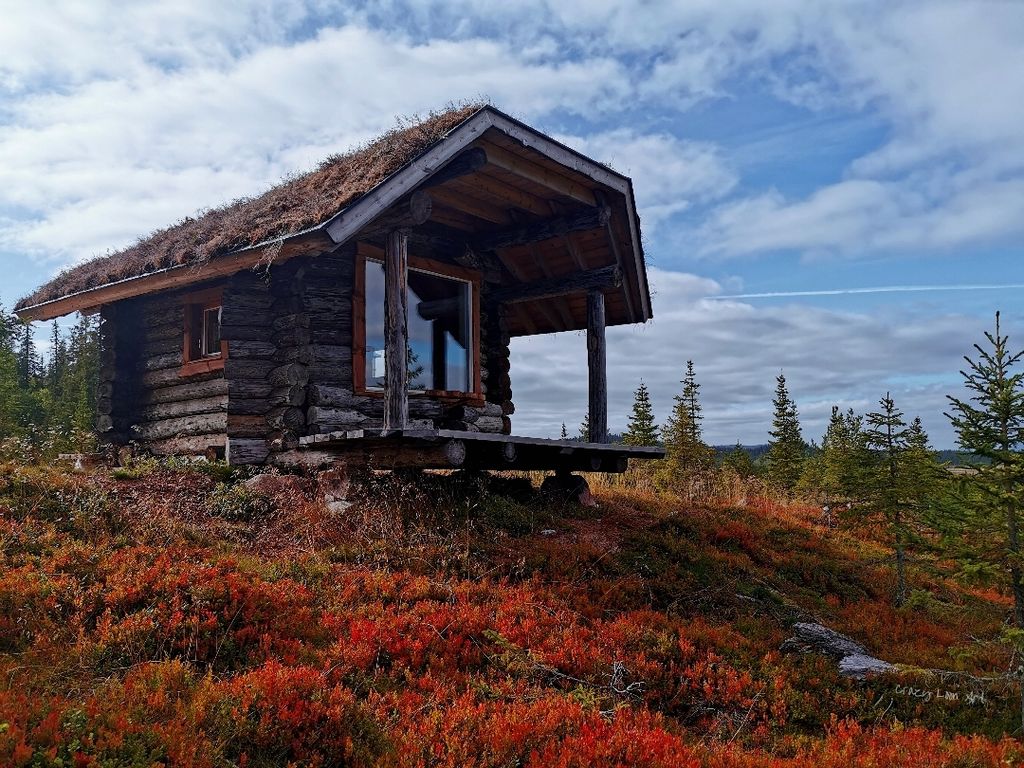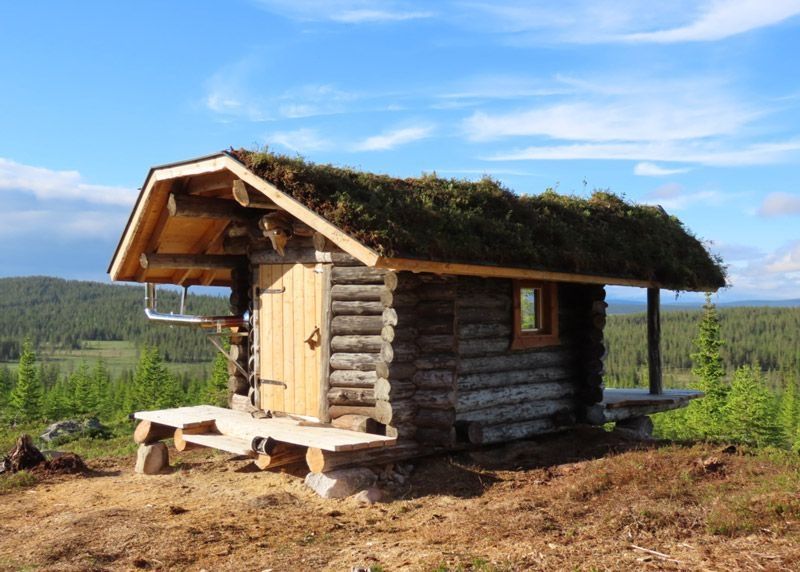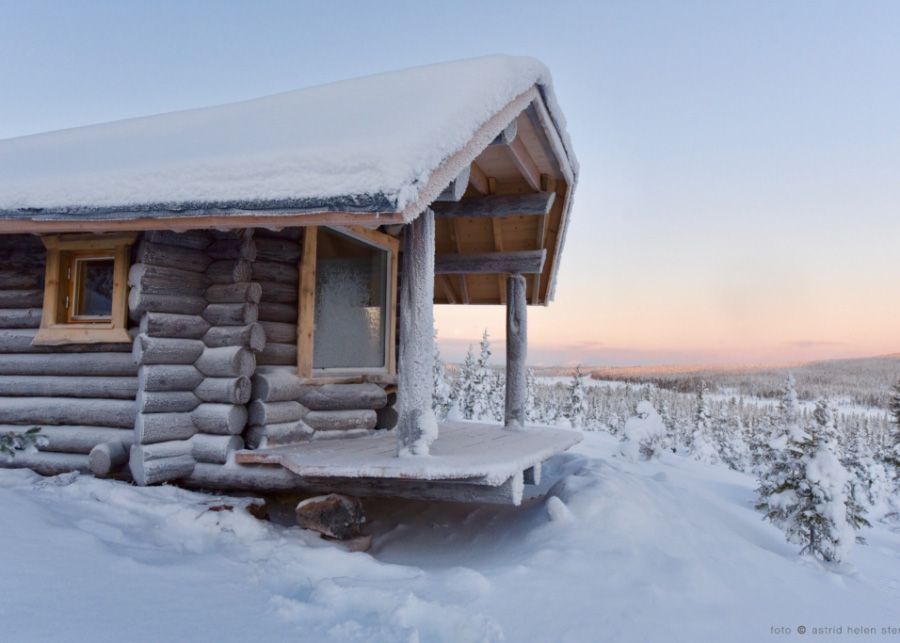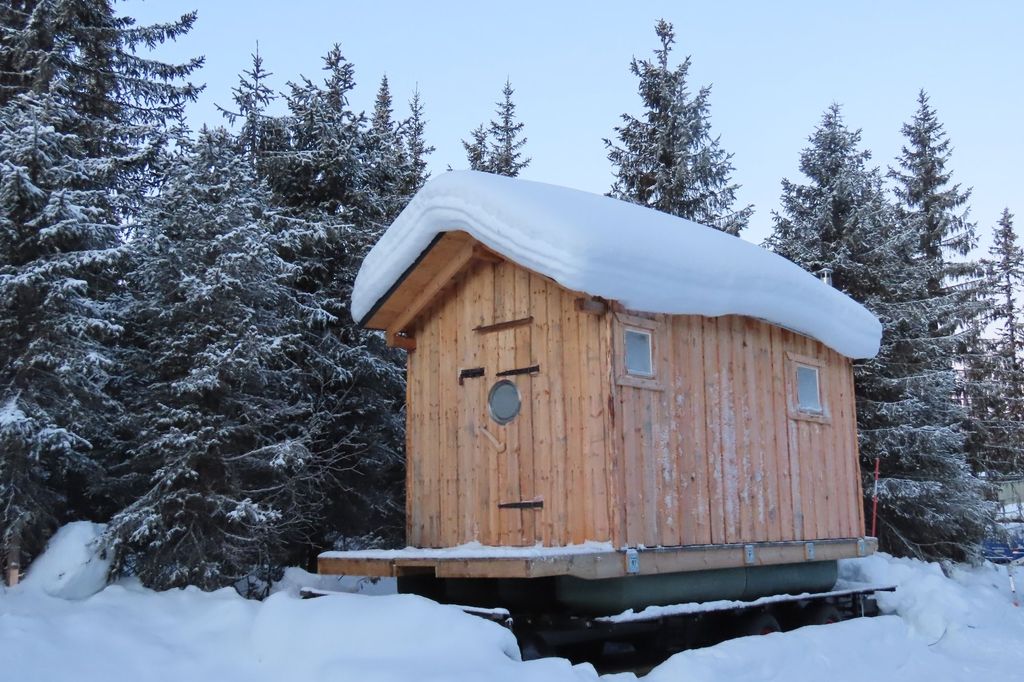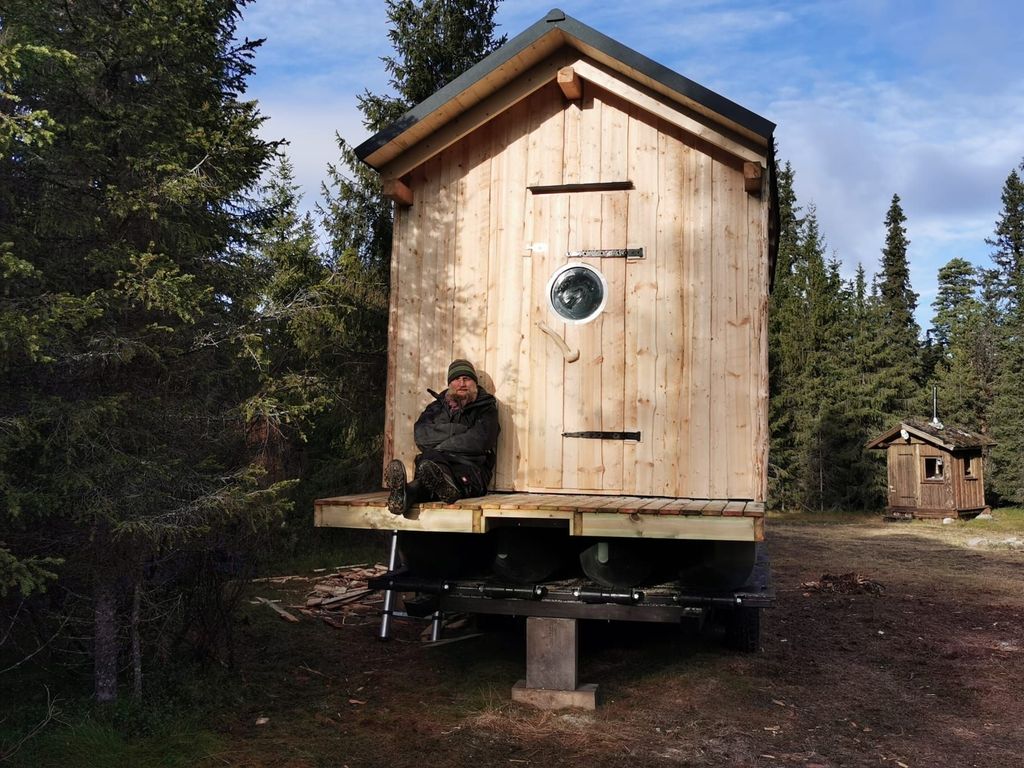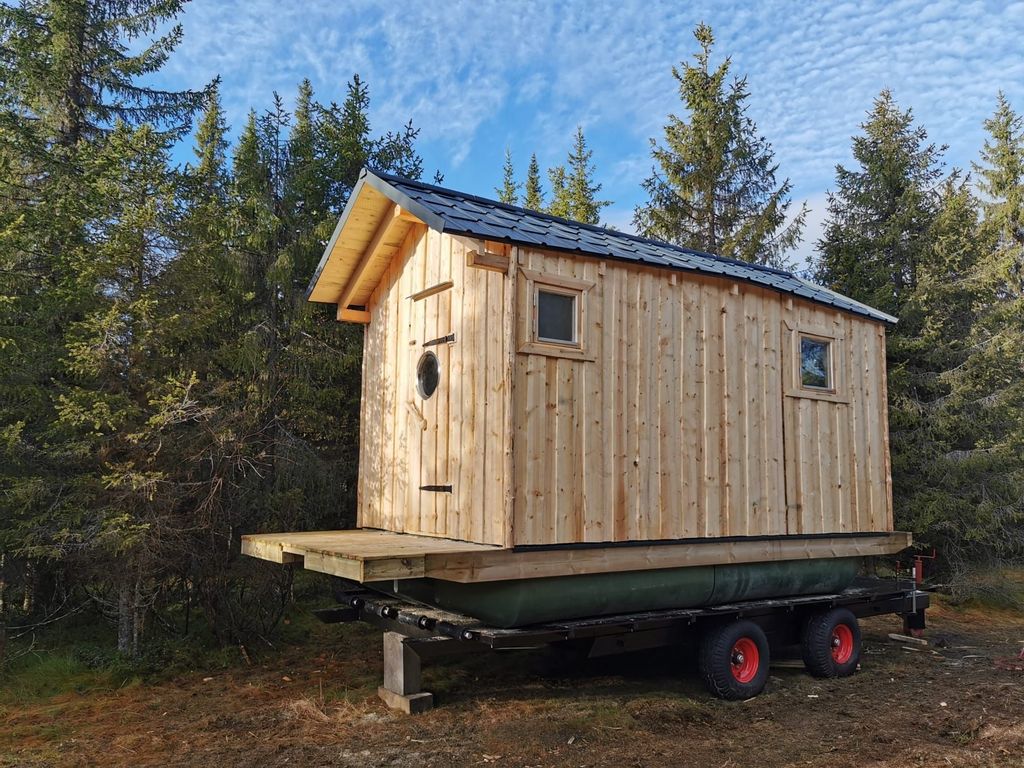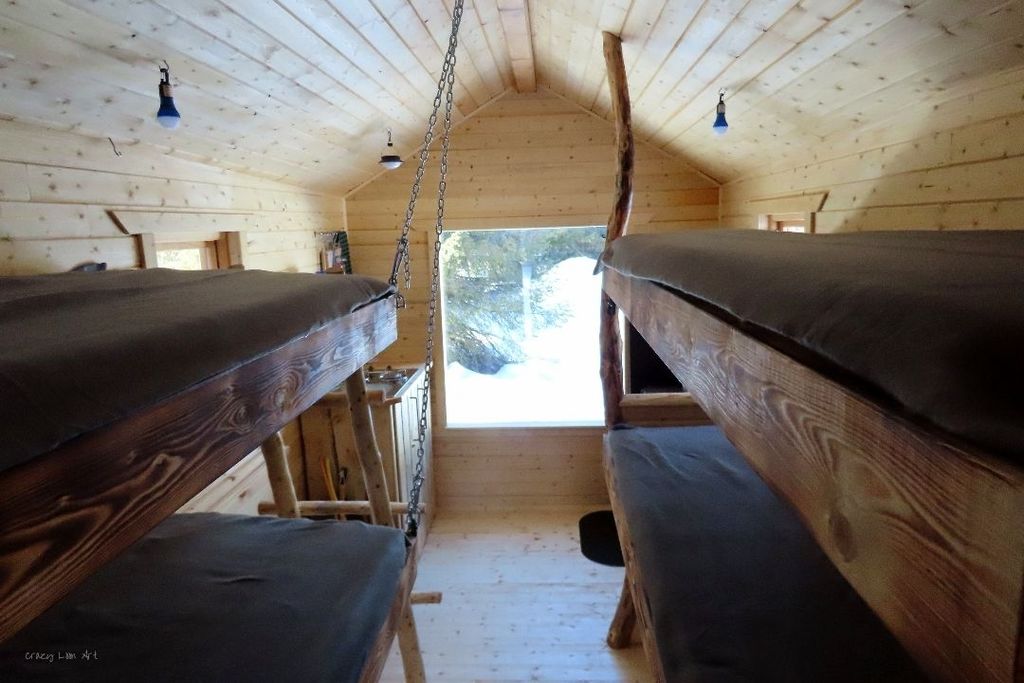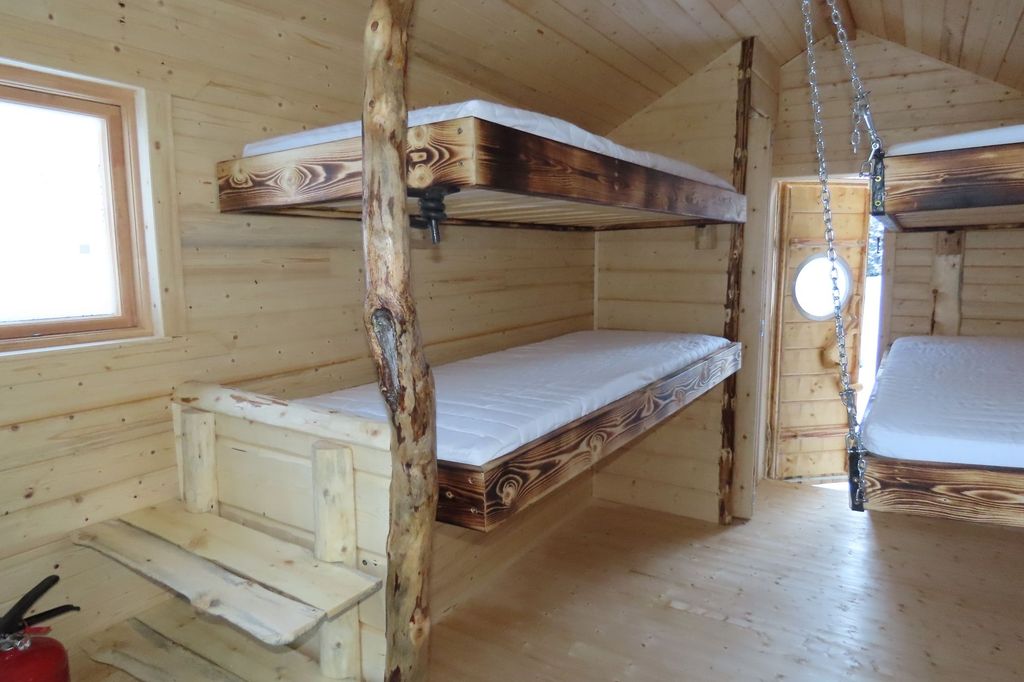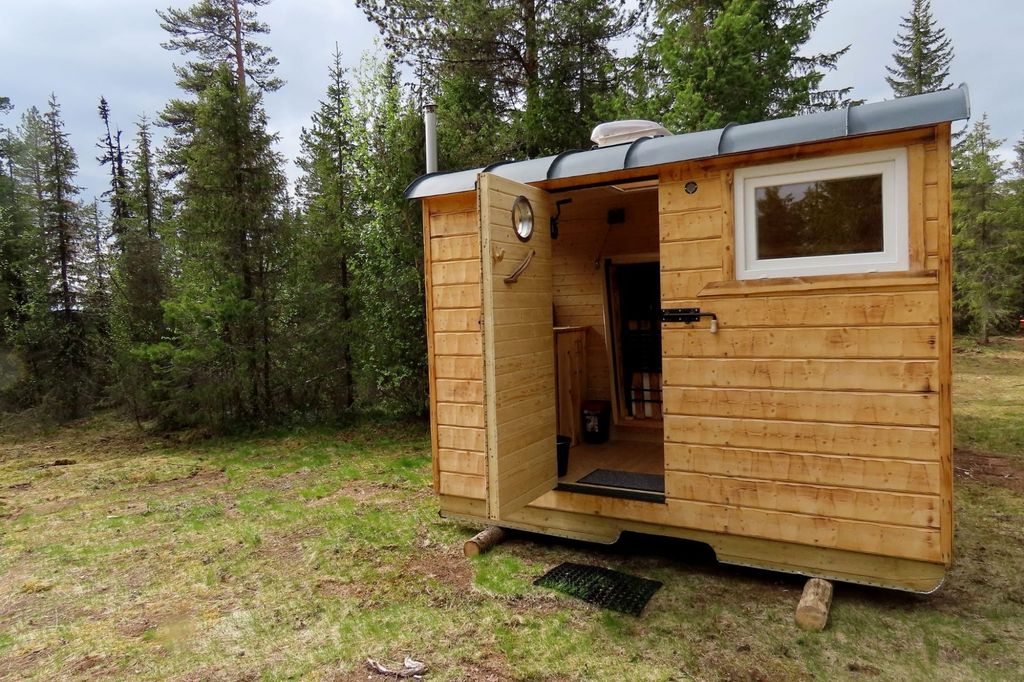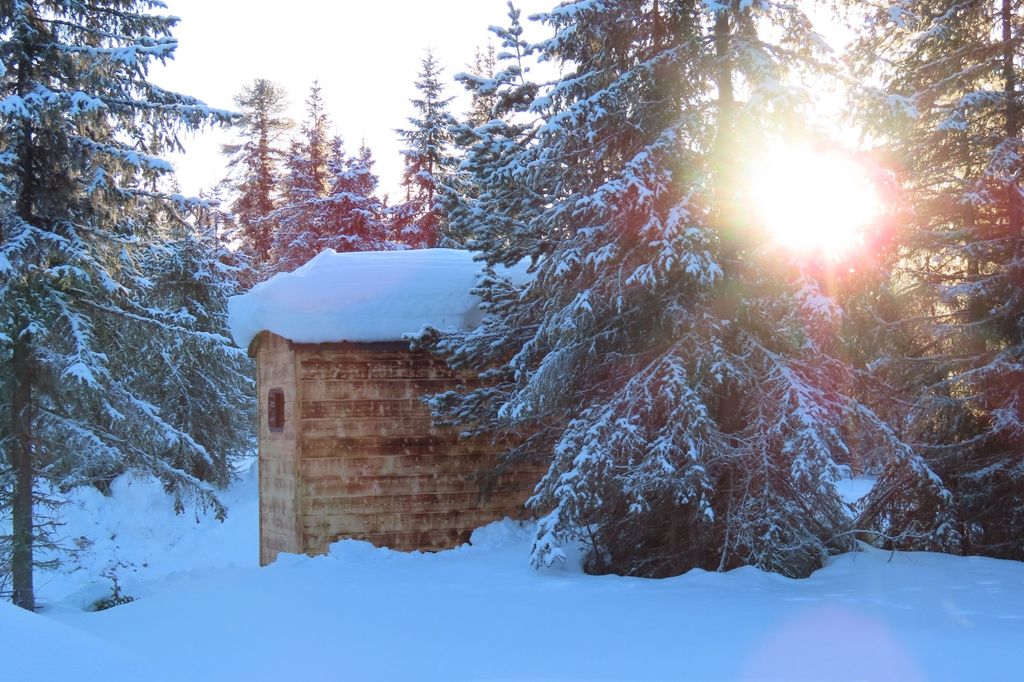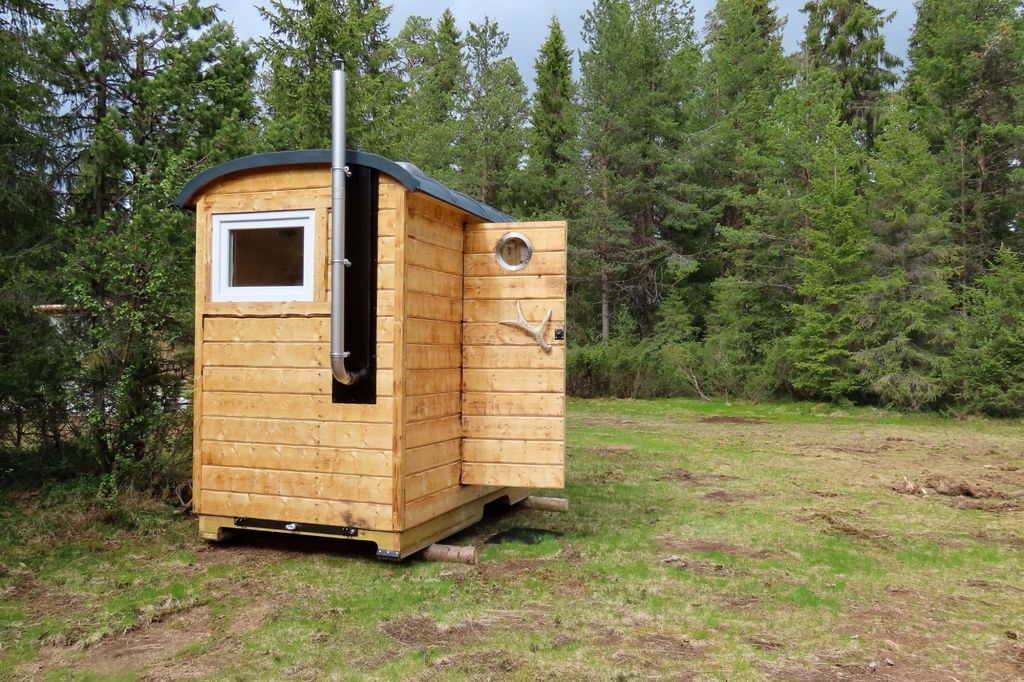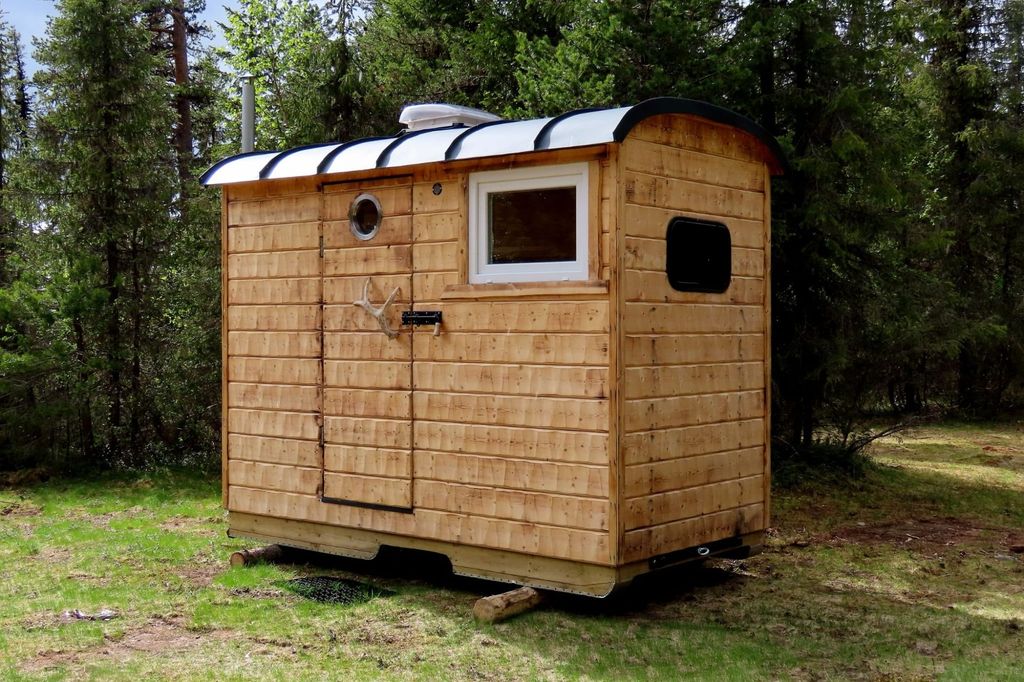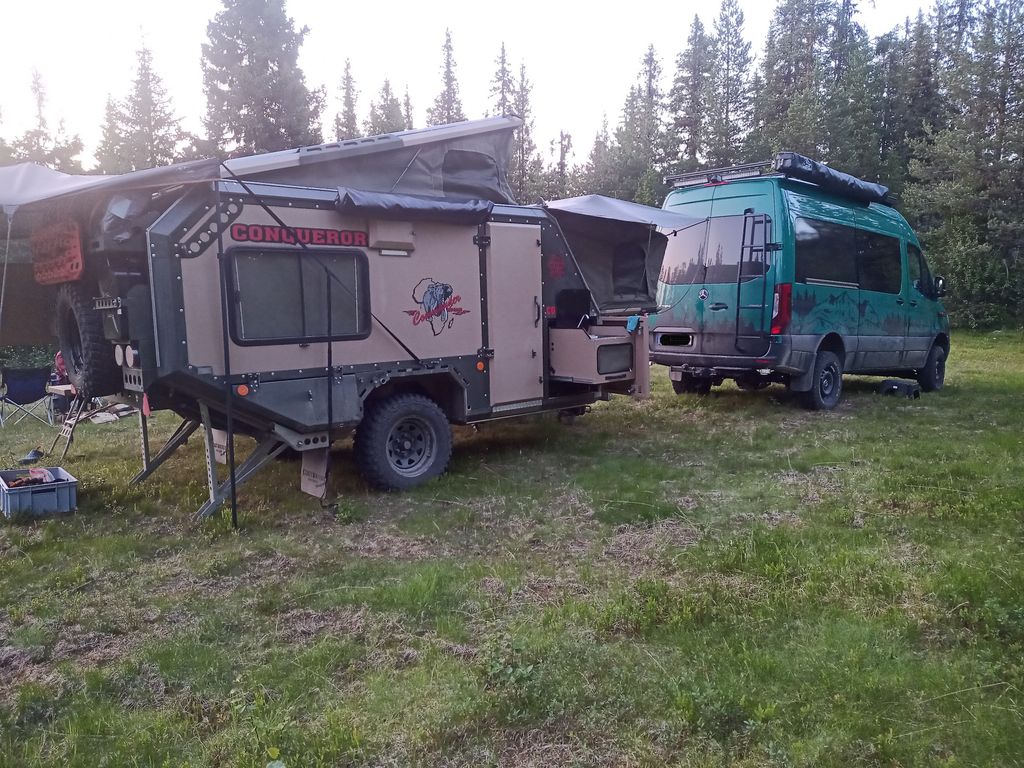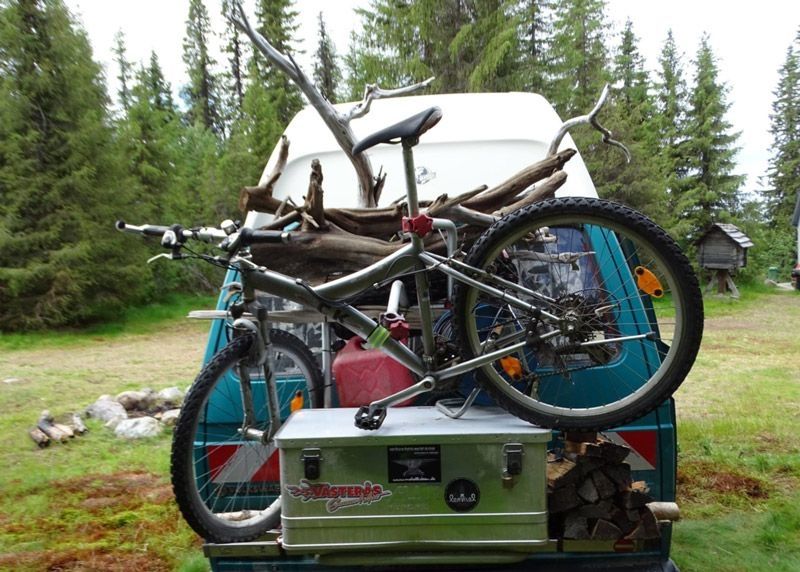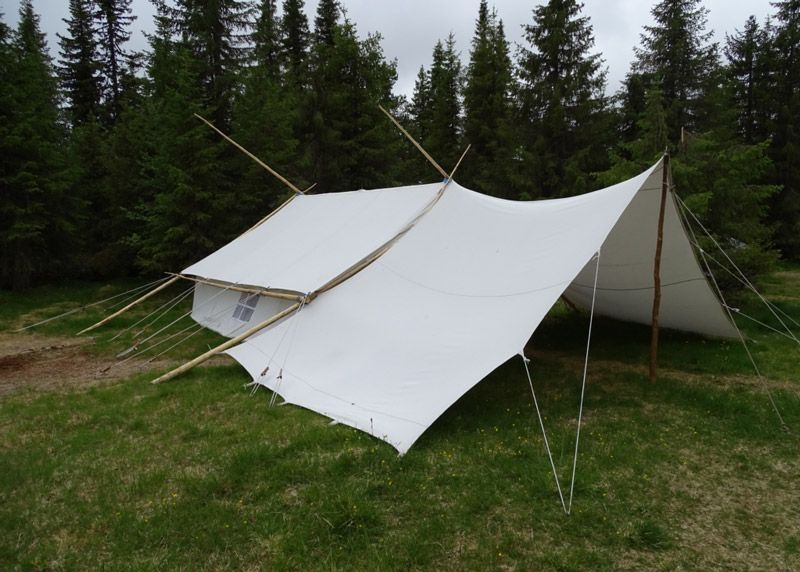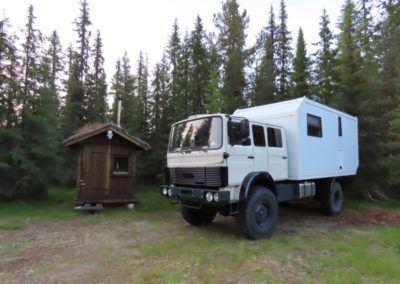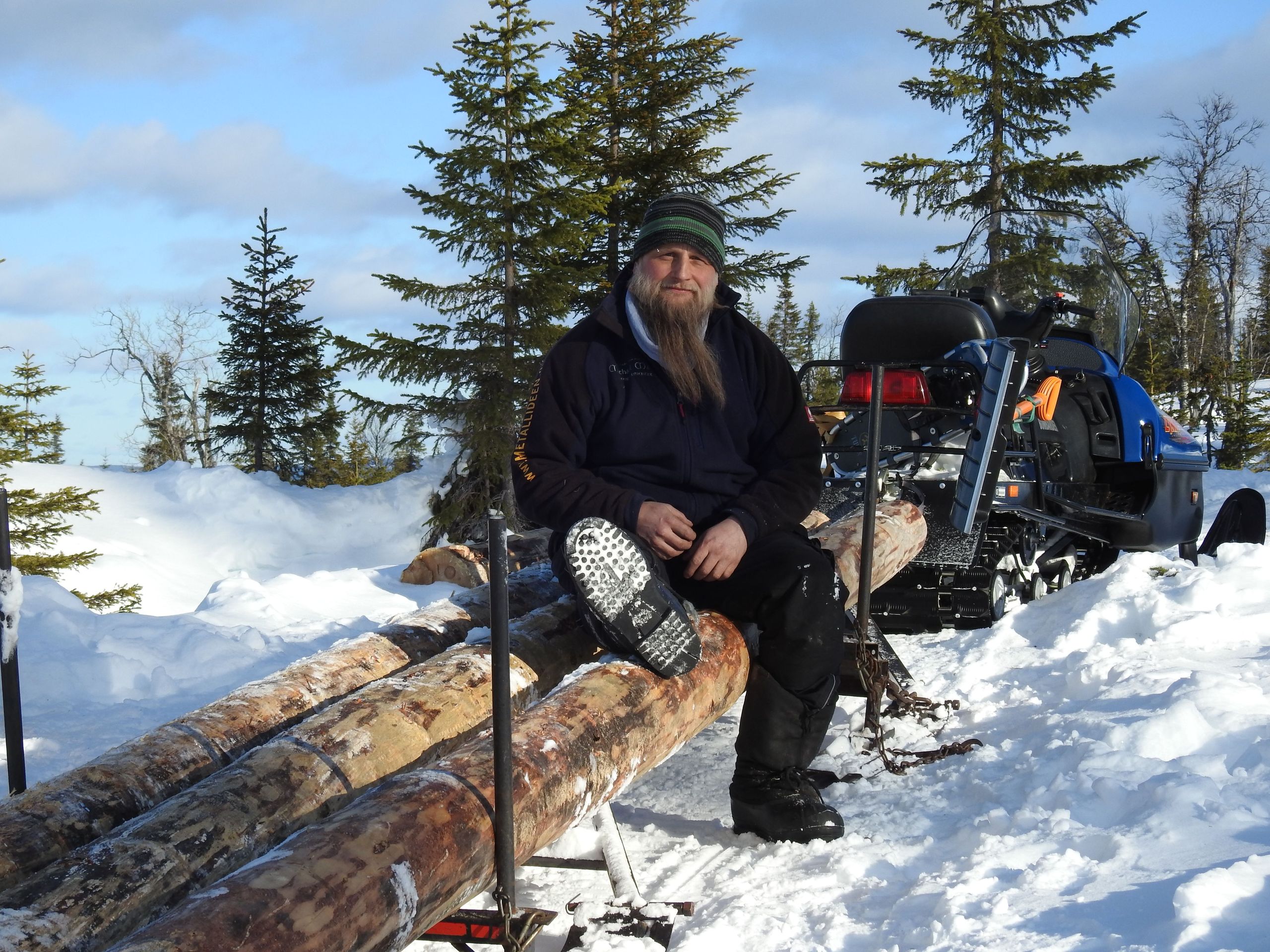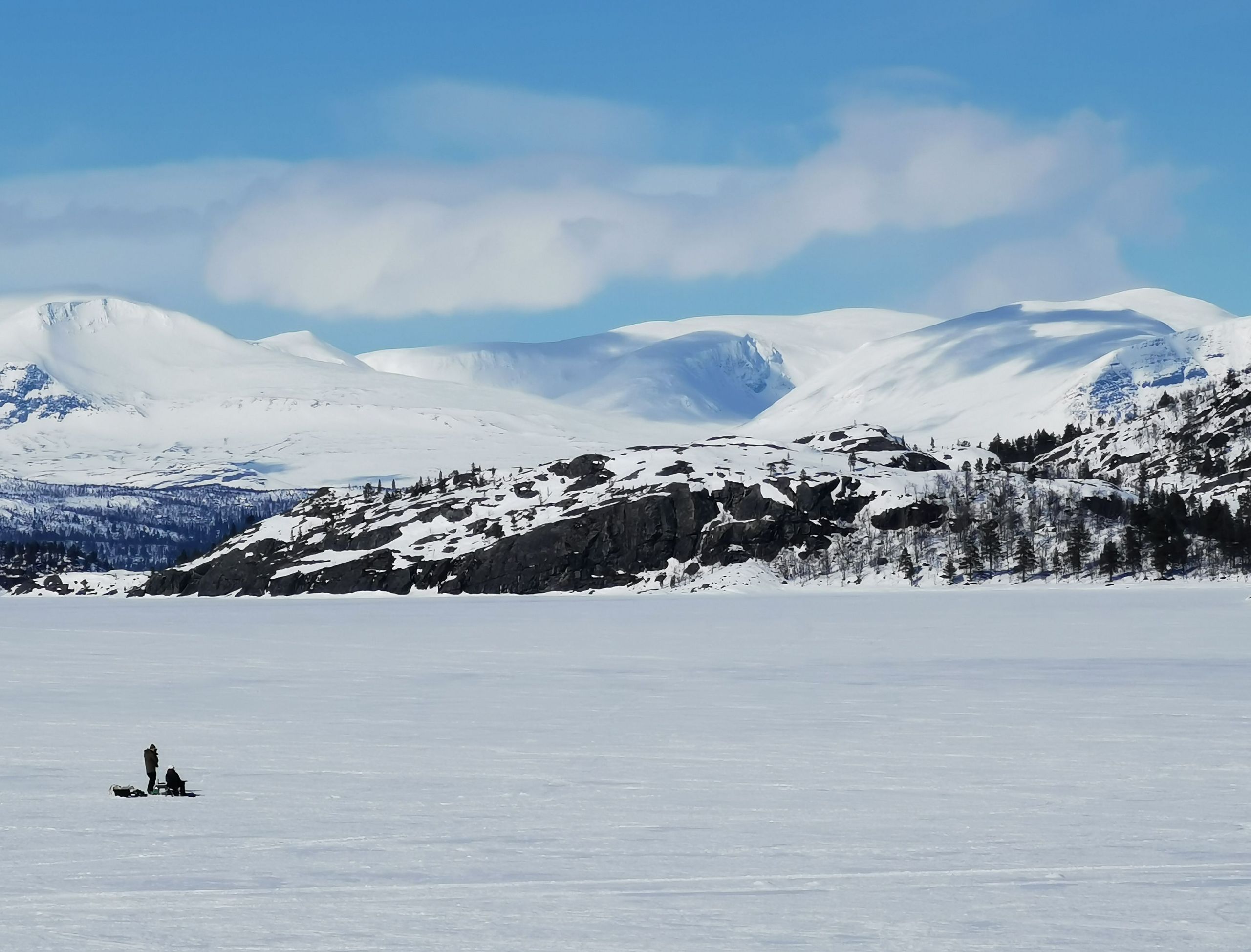Back to essentials: This is how living in Swedish Lapland looks like
Jan 19, 2023from Lesley-Ann Jahn
Hinterland host Michael on emigrating and feeling at home, Swedish serenity and what outdoor adventures await you here.
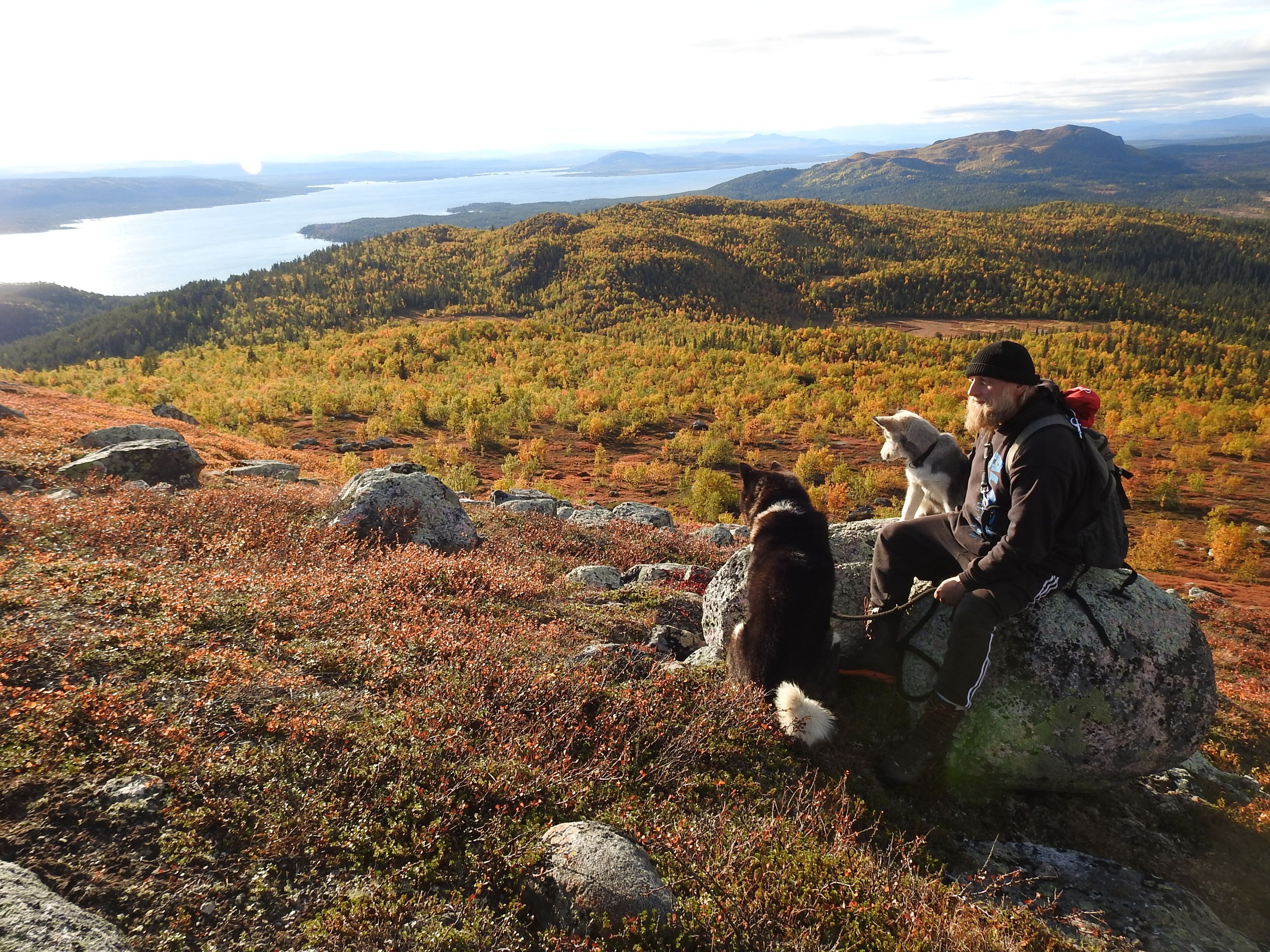
Most of us just manage to get out into nature for a few weekends a year (and maybe on vacation) to really switch off. It was the same for Michael. Until he decided to follow his passion and move to one of the most sparsely populated regions of Lapland. We wanted to know more about his exciting emigration story, how he lives in his seven backcountry wooden cabins and what still fascinates him about Swedish Lapland.
First of all, the most important question: How did you end up in Lapland as a family?
Originally, I come from a small town in Thuringia and cycled through Scandinavia for the first time when I was 19. There I met my wife, who is also from Thuringia. This was followed by trips to Iceland, Spitzbergen, paddling tours through Canada and expeditions through Greenland and Alaska. I quickly realized that this kind of landscape is just my thing. Since then, the plan was always there: At some point I have to get out of Germany, as I was working and living there, but didn't feel at home. We already lived rather alternative in Germany, at times even in a self-built Tiny House in log cabin style on a truck trailer on a large meadow. We simply needed more space, more peace and quiet. Actually, Canada was always my dream country. But when our son was born seriously ill, our life turned completely upside down and the Canada plan moved into the distance.
When did you reach the point where you decided to pull up stakes in Germany?
Sweden first came to mind as a compromise to ensure good medical care, to stay relatively close to the family in Germany and still live in a landscape similar to Canada. Then, when I also reached an absolute low point professionally in Germany, we actually packed our bags at the end of 2015 at rather short notice and I dissolved my company. I always had one thought that helped a lot: Even if it doesn't work out, at least we tried.
How were your first years in Arjeplog? Were you able to settle in quickly?
To be honest, we didn't know a word of Swedish and had hardly any savings. The first years were extremely bumpy. Before the house I found online was well habitable, we lived very simply and just slept on sleeping mats, for example. But then it went step by step. I converted the existing barn into a blacksmith's workshop and renovated a cabin that was already on the property. My idea: to share this special place with like-minded people who want to go on special tours, learn blacksmithing and log building or just want to get out. Arjeplog is scenically diverse and - what I like most - very secluded. In an area the size of Belgium, there are just 2,700 inhabitants, which makes a population density of 0.2 inhabitants per square kilometer.
You now have seven accommodations: four log cabins, a tiny house boat, another small dwelling and a tree house. How experienced should one be in outdoor adventures as a guest here?
Patagonia founder Yvon Chouinard's saying sums it up: "Going back to a simpler life is not a step backwards." Our accommodations are very rustic with wood stoves, mini kitchens and dry toilets. There is also a central guest bathroom with a shower, toilet and running water. One cabin has electricity, the others do not and none of our cabins have a water connection. In complete isolation, neighbors are at most moose, reindeer or other animals. Most of the cabins are located in different distances around one kilometer from our home. They are only accessible on foot, but still so close that one would be relatively fast with us if something happened. The cabin "Lonely Lynx", however, is located in the middle of nowhere at a river, a good 20 kilometers away from us. You can drive the first 18 kilometers, then it's a 1.5 hour walk. This is really only for people who want to be completely isolated and know how to get along in the "bush". If you like, you can also stay with your own camper between June and October! In any case, we have enough space here and offer our large natural meadow as a camping site.
- Image 1 of 5
Log cabin in absolute wilderness - "lonely lynx".
Arjeplog•from 116€
- Image 1 of 5
Tree house "Resting Raven" - rustic and close to nature
Arjeplog•from 111€
- Image 1 of 5
rustic log cabin "Lazy Moose" with wilderness feeling
Arjeplog•from 111€
- Image 1 of 5
rustic log cabin "Crazy Loon" - experience pure nature
Arjeplog•from 99€
- Image 1 of 5
rustic log cabin "Mad Muskox" - border to wilderness
Arjeplog•from 105€
- Image 1 of 5
Tiny-House-Boat "Busy Beaver" - Ruhe und Natur
Arjeplog•from 94€
- Image 1 of 5
Mini-Tiny-House "Funny Fox" in Lappland
Arjeplog•from 71€
- Image 1 of 5
Nature camping meadow in solitary location at Silvervägen
Arjeplog•from 26€
5.0
For guests you offer individual tours and experiences, such as blacksmithing, log cabin building, snowshoeing, ice fishing and canoe tours. Suppose I come to you in the winter and would like to do a day trip, what would you show me?
If the weather is good, we will go to "Stårbatjvara". This is a group of mountains very close by. You can go up to all three peaks. They are not too high, but with the depth of the snow in the winter months, it is quite a strenuous tour. From the top you have a really spectacular view of the surroundings. In the winter we use the snowmobile and drive around the mountain massif for about 60 kilometers. No matter what time of year, this landscape is very exciting - from vast forests to moors, lakes, always with the mountains in view. Even though this route is right on our doorstep, you feel like you are in the middle of the wilderness. I show different animal tracks, tell more about the peculiarities of the vegetation. And then I like to ask: And, what do you hear? The answer: Nothing. Absolute silence.
I read this sentence under one of your Instagram posts: "Consciously reducing the otherwise high standard of living, tranquility, nature, and distance from everyday life often lead to the long overdue journey to oneself." Did you find yourself in Lapland?
Since I found myself, I know what I want and what is good for me. Here in Lapland, I can now live exactly that and experience small adventures every day. It's right up my alley! Even though it may sometimes give outsiders the impression that I rush headlong into things, I never plunge into anything without careful consideration. Instead, I always give my full commitment to things that are important to me and that my intuition gives a "green light" for. After all, we only live once and should try to pursue our dreams during this time.
Now I spend the whole day doing what I love: being outdoors, engaging in creative craftsmanship, being free, and living without stress. Being able to share my passion with others and introduce them to my way of life feels good. That's why right now, I actually only wish for things to stay exactly as they are. I feel very well taken care of and extremely comfortable in Lapland - because of the landscape, but also due to the mentality of the Swedes.
What are the Swedes like?
In Sweden, there is an unwritten law that everyone is equal. People meet each other in a friendly manner and at eye level - regardless of profession or income. There's a saying you often hear here that describes the Nordic way of solving problems well: "Det ordnar sig." That translates as "It'll work out." Here, people approach things with much more composure than I know from Germany. This certain coolness in everyday and stressful situations helps to take the pressure off. What I also noticed right away was that the Swedes walk more slowly. There's no hurry here, and if there's only one checkout open in the supermarket and a line forms, people chat a bit with other customers to pass the waiting time in a relaxed manner. For me, it is also a great honor to have a very good connection to Swedish "old-timers" and to learn more about their culture.
...that is, people from the indigenous population in northern Scandinavia.
Exactly. When I say I have "buddies" here, most of them are over 70 years old. Because this generation grew up in such a hard, cold and relatively poor area, you can really take a leaf out of their book when it comes to composure and stamina. And, of course, I also learn a tremendous amount when we are out or working together: about nature, tracking in the snow, animals, the forest, the types of wood found here, and traditional log cabin building.
When you talk about Lapland, you can't avoid the Northern Lights. Are they still fascinating for you or have they become a normal sight?
The light here is just almost always brilliant! And the northern lights are always special, always different. Of course, you get used to it a bit and while guests are totally excited, I've also thought "Oh yes, nice, but that's still much better" and disappeared back into the house. But that happens rather rarely.
Do you have another good tip on how to best arm yourself against the Lapland cold?
Just put on an extra fleece jacket ;-) I certainly don't wrap the guests up in cotton wool during tours. Of course, I make sure that everyone is dressed appropriately - good shoes are especially important, along with a hat and multiple layers. But it's also okay to feel a bit cold here at -30 degrees Celsius. The best remedy is always movement! And warming up by the fireplace or enjoying a sauna session afterwards completes the day spent outdoors.
Up for a camping adventure in Finland? In our Winter Camping Guide, we have compiled the best tips and our favorite gadgets to help you stay warm while on the go in sub-zero temperatures.
